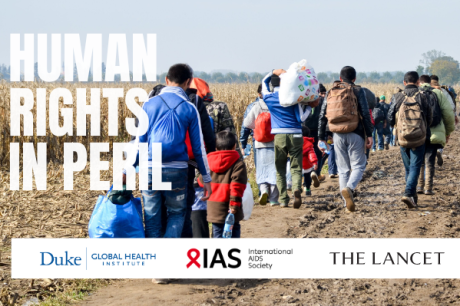
The Guanaja Crew: Priyanka, Hailey, Shalini, Cassie, and Jay
Published June 12, 2015, last updated on October 17, 2017 under Voices of DGHI
By Shalini Subbarao
This week we made the five and a half hour boat journey to Guanaja, one of the neighboring Bay Islands. The mayor heard that we were doing vision screenings in Roatan and he invited us to come to Guanaja (or Bonnacca, as the people there call it) to do vision screenings at the schools there. He sent his boat to pick us up and had a welcoming committee take care of us like royalty. There were so many amazing parts of this trip, so I'm just going to start writing and see where this post goes!
"Where There's Life, There's Hope. Working for a Better Bonnacca."
This is what the shirts of the welcoming committee said and it really stuck with me. The committee was made up of women who were really making a difference in their community by reaching out to volunteers like us and organizing programs that are helping immensely. They streamlined the vision screening process for us so much by getting the list of all the students before we were even set up and getting students from the other schools to come to one school so we wouldn't have to keep moving all our supplies.
We worked from 7 a.m. to 6 p.m. one of the days, but by the end of the three days, we had seen about 500 kids and 100 adults and given out about 100 pairs of free glasses. One of the teachers that helped organize the trip told us about the students' reactions in her class the day after we did vision screenings. They were so surprised how much more clearly they could see with their new glasses and amazed that they did not know how much they needed the glasses.
Hearing her talk about these reactions relinquished this doubt that I've been feeling, the doubt that these glasses will be collecting dust, forgotten somewhere because of the "uncoolness" stigma. I finally got this follow-up relief that the students understand the worth of these glasses and I could not be happier.
El Cayo
Guanaja has an interesting dynamic. A majority of the people live off the mainland on a key, El Cayo. The sense of community on this key with painted houses crowded together, streets made for people instead of cars, and canals connecting everything and everyone made me feel like home there. Intrigued by the area, I listened, asked questions, and collected stories about this community throughout the week. Here's what I've put together:
Guanaja used to be a British Isle like the rest of the Bay Islands, but Britain gave the three islands to Honduras so they would stop fighting for Belize. Hurricane Mitch hit Guanaja worse than the other Bay Islands. At one point after the hurricane, you could walk from the mainland to El Cayo on the floating flattened houses. The British sent so much aid, and the Guanajans are extremely grateful for that.
Currently, the community barely has any crime and it is safe to walk around there and take boats to the mainland at any time of the night and day. However, the resources there are far fewer than Roatan, especially in terms of health supplies. Roatan has gained a lot of exposure due to its tourism, but after Hurricane Mitch, Guanaja has not had much tourism.
Volunteer medical teams do not come to Guanaja as much as Roatan, and many people do not have access to pain killers or cold medicine. Cherie Ann, one of our main contacts, has developed the relationship between Clinica Esperanza and Guanaja to get all the schools stocked with pain killers so they do not have to send students home any time they have a headache. The work that she has done for the community is truly amazing!
Guanaja was everything we could ask for and more! I will never forget the ladies I met there and the stories I've collected, stories I can spread so Guanaja will finally be noticed.
It was also pretty nice to be called "the doctors" every where we went. :)


